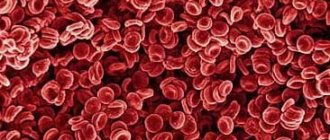Vera Zimina, Doctor of Medical Sciences, phthisiatrician, infectious disease specialist, professor of the Department of Infectious Diseases with courses in epidemiology and phthisiology at RUDN University:
“The illusion spread among the population that we will soon defeat tuberculosis has led to a weakened and commercial shortage of pharmaceutical companies. For a long period of time they did not develop new anti-tuberculosis drugs, only recently we began to receive new effective anti-tuberculosis therapy. “A lot depends on the patients; of course, someone interrupts therapy and, thereby, aggravates the disease.”
The worst case scenario is extensively drug-resistant tuberculosis. It is caused by bacteria that do not respond to active second-line drugs. In such situations, treatment is approached individually; it takes time to select the right regimen. According to WHO estimates, the situation with resistant tuberculosis is worst in India, China and Russia. These countries account for almost half of all cases.
The anti-tuberculosis course of treatment also causes many side effects, so along with the main drugs, doctors prescribe accompanying therapy: antispasmodics, sedatives, antiemetics, enzymes, etc.
What is tuberculosis
Transmission of tuberculosis in 95% of cases occurs through airborne droplets, less often through nutrition (eating infected food) or contact.
Delayed diagnosis and inadequate treatment of tuberculosis can lead to death. From the history of tuberculosis
Previously, tuberculosis was called “flying death”, consumption, “white plague”. The fact that it existed in ancient times is evidenced by the found mummies of Egyptian pharaohs, whose bones were strangely altered. Even the records of Avicenna, Galen and Hippocrates (3 thousand years BC) contain information about the disease. They wrote about progressive forms of tuberculosis, which are characterized by: profuse sweating, weakness, and rapid weight loss.
Since 1200 BC. Hindus observed a law according to which it was forbidden to marry women suffering from consumption. Scientists from France Lainek and Bailey were the first to describe the morphological unit of pathology. They called it a “tubercle” - tuberculum.
The causative agent of tuberculosis was discovered on March 24, 1882 by R. Koch. This is why the bacterium Mycobacterium tuberculosis is often called Koch's bacillus. Subsequently, March 24 was declared World Tuberculosis Day.
Today there is an opinion that only representatives of low-income groups suffer from tuberculosis. It is erroneous, since absolutely anyone can become infected. Many famous and wealthy people died from the disease. Among them are President E. Jackson (USA), actress Vivien Leigh, Russian writer A.P. Chekhov and others
Epidemiology of tuberculosis
Despite the high level of development of modern medicine, tuberculosis is still very dangerous for human health. According to statistics, about 30% of the world's population suffers from it. The disease ranks second in mortality among all severe infectious pathologies. About 9 million new cases of tuberculosis are registered annually. Of these, 2 million people die.
The list of countries where tuberculosis suffers the most includes: Belarus, Georgia, Armenia, Bulgaria, Russia, Estonia, etc. Scientists explain the rapid spread of infection by the following factors:
- Low economic situation of certain regions. The social factor, although not the main one, is very important in the development of the disease. Citizens with low incomes are infected much more often.
- Population migration, which causes the “introduction” of the disease to other countries.
- Increase in the number of HIV infections. HIV patients have a weakened immune system and are unable to cope with such a serious infection as tuberculosis. It has been proven that when diagnosed with AIDS, the risk of infection increases 30 times.
- Increasing the resistance of Koch's bacillus to the drugs used. Treatment of tuberculosis in adults is very long. Not everyone completes the course. As a result, the bacillus becomes resistant and subsequently very difficult to treat.
Classification of the disease
Tuberculosis is usually classified into:
- Primary. It can be: - localized (tuberculosis of the intrathoracic lymph nodes, the focus is located at the site of infection); — prelocal (meaning intoxication in adolescents and children that developed against the background of tuberculosis).
- Secondary. By localization it is divided into: - non-pulmonary (tuberculosis of the skin, bones, meninges and brain, peritoneum, intestines, kidneys, joints, mammary glands, eyes, subcutaneous tissue, genitals, mesenteric lymph nodes); - pulmonary (focal, cavernous, cirrhotic, infiltrative, miliary, disseminated and fibrous-caverous tuberculosis, tuberculoma, caseous pneumonia).
Some forms of the disease are:
- sarcoidosis;
- pleurisy;
- empyema of the pleura.
Phases of tuberculosis:
- infiltration;
- decay;
- contamination;
- resorption;
- seals;
- scarring;
- calcification.
Forms of tuberculosis:
- open (bacteria are excreted along with sputum, MBT – positive);
- closed (bacteria are not isolated, MBT is negative).
Stages of the disease
There are three stages of development of tuberculosis:
- primary;
- latent;
- active.
There are also open and closed forms. In the first case, the disease is clearly expressed, bacteria are easily detected in sputum and feces, and the patient himself poses a danger to others in terms of infection. The closed form is not dangerous to others. Pulmonary tuberculosis is most common, but this infection can also affect bones, joints, the genitourinary system, intestines, peritoneum, meninges, central nervous system, peripheral lymph nodes, and skin (scrofula).
Primary infection
Infection occurs when bacteria manage to penetrate the protective barriers and penetrate deep into the lungs. If the upper respiratory tract is healthy and working correctly, it manages to retain and remove most of the Koch bacilli and other dangerous bacteria with mucus. In theory, one stick is enough to infect people with weak immune systems, but more resistant organisms still require repeated contact.
The bacteria are then ingested by alveolar macrophages. Unneutralized pathogens begin to reproduce, and local inflammation occurs in the area of infection. Through the nearest lymph nodes, infected macrophages enter the bloodstream, penetrating other organs. But if a person has developed at least partial immunity, spread through the bloodstream is unlikely.
Latent infection
After three weeks of active bacterial growth, in approximately 95% of cases, the immune system suppresses their growth and reproduction. Then the foci with microbes in the affected organs turn into epithelioid granulomas. Tuberculosis bacilli can live in them for many years, while the person feels completely healthy, and no clinical manifestations of the disease are observed. If the immune system is strong enough, the infection remains in an inactive form. Almost one-third of the world's population is thought to have latent TB, but these people do not pose a threat to others because they do not shed the bacteria. However, malfunctions of the immune system can lead to an exacerbation of the process. It happens that the primary lesion begins to progress immediately. At risk are young children and people with very weak immune systems.
Active stage
Tuberculosis in adults enters the active phase within two years from the moment of infection, but it often manifests itself after decades. This is facilitated by a decrease in cellular immunity. People with HIV infection who are not receiving antiretroviral therapy are most vulnerable in this regard. A number of other patients are also at risk:
- with diabetes mellitus;
- with head and neck cancer;
- with kidney disease who are prescribed dialysis;
- who have undergone gastric resection surgery;
- taking medications that suppress the immune system (after organ transplantation).
Smoking and poor nutrition are also considered risk factors, so this infection is often found in people leading an antisocial lifestyle. If left untreated, the tissues of the organ damaged by the disease disintegrate, and multiple cavities (isolated cavities in the lungs) form.
Forms of tuberculosis:
- tuberculoma;
- latent;
- focal (limited);
- miliary;
- infiltrative;
- disseminated;
- cavernous;
- fibrous-cavernous;
- cirrhotic;
- caseous pneumonia.
Causes of tuberculosis
As mentioned above, the causative agent of tuberculosis is most often Mycobacterium tuberculosis (bacterium from the Mycobacterium tuberculosis complex group) - an acid-resistant gram-positive rod of the actinomycetes family (genus of mycobacteria). Sometimes the disease is caused by other pathogens from this group.
Koch's bacillus does not produce exo- and endotoxins. It is resistant to environmental influences and can survive for a very long time outside the human body. The bacillus dies under the influence of ultraviolet radiation and sunlight.
The source of tuberculosis infection are sick people (especially those diagnosed with the open form). The route of infection is respiratory, that is, during inhalation of air in which bacteria are dispersed. Over the course of a year, a patient with the open form can infect more than ten people.
Infection from persons who are carriers of the closed form, or who have scant excretion of Koch's bacillus, is possible only with close and frequent contacts. Situations of disease transmission by nutritional (the bacillus enters directly into the gastrointestinal tract), contact (through damaged skin) and placental routes are rare.
Poultry and cattle can also be sources of the disease. Tuberculosis is transmitted through cow's milk, eggs, and when feces of infected animals get into water.
It should be noted that the described pathology does not always develop when the bacterium Mycobacterium tuberculosis enters the body. If a person is healthy and has a strong immune system, the risk of infection is low.
Benefits of vaccination
BCG was obtained a long time ago, but is still relevant. When it was created, those genes that cause the disease were removed from the stick, i.e., in fact, it is harmless, it does not cause the disease on its own. The main thing is to understand the principle of its operation: immunity in tuberculosis is non-sterile, i.e., as long as this bacterium (the one in the vaccine) is present in the body, the second bacterium will not be able to act and cause the disease. And this means that a virulent bacterium will not be able to cause the tuberculosis process.
Article on the topic
In facts and figures: until the 20th century, tuberculosis was practically incurable
Symptoms of tuberculosis
Tuberculosis can affect various systems of the human body (respiratory, genitourinary, bone, etc.), so its symptoms are always different. The pulmonary form (approximately 85% of cases) is characterized by symptoms similar to other diseases of the respiratory system, but there are still some features. Thus, the clinical symptoms of pulmonary tuberculosis include:
- Cough. It starts out dry, but becomes wet as the bacilli spread. It is present for at least 3 weeks. Coughing attacks occur at night and do not go away for a long time. With a prolonged inflammatory process, blood may be found in the sputum.
- Low-grade fever (1-2 degrees above normal). It usually increases in the evening, and the patient immediately feels weak. Temperature in tuberculosis is a protective reaction of the body in response to an invading foreign agent.
- Hemoptysis. One of the main signs of pulmonary tuberculosis. Indicates damage to the alveoli (small arteries that supply blood to the lungs).
- Chest pain. Occurs during coughing. This indicates that the pleural lobes are involved in the pathological process. The pleura covers the lungs and penetrates into their interlobar spaces. Since only the pleura is innervated, pain in the chest area confirms irritation of the nerve endings going to it.
- Heavy sweating (especially at night).
- Severe shortness of breath on exertion. Koch's bacillus destroys lung tissue. As a result, the lungs cannot supply the body with the required amount of oxygen. Therefore, in situations where the need for oxygen increases, the patient feels shortness of breath. He tries to breathe in as much air as possible, but he can’t.
- Weakness, malaise. The body fights intoxication, so your health worsens.
- Weight loss.
Symptoms of tuberculosis in children
In children, in addition to the symptoms described above, tuberculosis manifests itself:
- enlarged and painful lymph nodes (they trap mycobacteria that spread through the lymphogenous route);
- pallor of the skin (innervation of blood vessels and skin circulation worsens);
- sleep disturbance;
- absent-mindedness, academic retardation;
- sudden mood swings.
Extrapulmonary forms of tuberculosis
Extrapulmonary tuberculosis has specific symptoms, so making a correct diagnosis is quite difficult. So, with damage to the spine, bones and joints, the patient complains of:
- stiffness and limited movements;
- frequent bone fractures;
- posture disorders;
- pain in joints, back;
- the appearance of pathological vertebral curves.
Gastric tuberculosis is always accompanied by open clinical symptoms:
- bloating;
- blood impurities in stool;
- intestinal obstruction;
- increase in body temperature to subfebrile levels;
- pain like gastritis/pancreatitis.
Tuberculosis of the kidneys and genital organs (genitourinary system) manifests itself:
- hematuria (blood in the urine);
- pain in the lumbar region;
- increased body temperature;
- infertility (if a woman’s genitals are affected).
With tuberculosis of the nervous system, the meninges usually become inflamed. The patient experiences severe pain when tilting the head, tension in the neck muscles. Here it is important to differentiate tuberculosis from meningitis.
If you notice similar symptoms, consult a doctor immediately. It is easier to prevent a disease than to deal with the consequences.
Diagnosis of tuberculosis
Pulmonary tuberculosis is confirmed microscopically. To make a correct diagnosis, the patient is prescribed an examination, which includes:
- Collection of necessary information about the patient (symptoms, possibility of infection, previous illnesses).
- Clinical examination (general condition is assessed, dominant symptoms are studied).
- Consultation with a phthisiatrician (a specialist who treats tuberculosis). During the examination, the doctor palpates the chest to determine whether there is a lag in the respiratory function of the left/right lung. Auscultation and percussion make it possible to understand where exactly the infectious focus is located.
- Laboratory diagnostics: - blood biochemistry (deviations in liver parameters are observed (impaired synthesis of various liver enzymes), an increase in reactive protein, changes in water-salt balance); - general urinalysis (protein is present in the urine of patients with tuberculosis).
Mantoux test (tuberculin test)
The Mantoux test is a test that shows the sensitivity of the pathogen to proteins. Increased sensitivity is possible when infected with an atypical form of mycobacteria or after vaccination. The substrate is formed by T lymphocytes. When they are activated, a delayed allergic reaction develops.
The Mantoux test activates mechanisms that cause inflammatory reactions, which are characterized by focal accumulation of cells - swelling and redness appear on the skin.
Indications for tuberculin test:
- after contact with a patient with tuberculosis;
- with an increased risk of contracting an infection;
- HIV patients;
- with severe symptoms of tuberculosis.
The basis of the tuberculin test is not living mycobacteria, but their breakdown products (tuberculin). At the time of their subcutaneous administration, a small papule (approximately 5 mm) is formed, which soon resolves. After 3 days, the doctor evaluates the results - measures the diameter of the palpable and visible protrusion.
In response to the Mantoux test, the subject may experience:
- temperature increase;
- joint pain;
- redness of the skin at the site of tuberculin injection;
- changes in the general blood test.
Interpretation of tuberculin test results:
- negative – there is no compaction at the site of tuberculin injection or a prick reaction of up to 1 mm is observed;
- doubtful - the size of the papule is from 2 to 4 mm, there is no compaction;
- positive – the papule is clearly visible, its diameter is more than 5 mm: – weakly positive – 5-9 mm; - medium intensity - 10-14 mm; - pronounced - 15-16 mm;
- hyperergic (very pronounced compaction) - in adolescents, the size of the papule is 17 mm or more, in adults - at least 21 mm.
Microscopic and bacteriological methods for diagnosing tuberculosis
To determine the presence of Koch bacillus in the body, sputum released during coughing is taken. Her collection is carried out 3 times - during the first visit to the TB specialist, in the morning of the next day, during the second appointment. If the patient is unable to collect sputum, other materials, such as those taken during bronchoscopy or stomach contents, may be used.
When diagnosing tuberculosis, a microscopic test identifies the pathogen and is therefore very important. It allows:
- understand how far the pathological process has gone;
- assess whether the treatment prescribed to the patient is effective;
- monitor the patient's condition over time.
Among the most commonly used microscopic examination methods are:
- staining the material with special substances that glow during examination under a fluorescent microscope;
- staining of the material using the Ziehl-Neelsen method, followed by examination under a microscope.
Diagnostics is based on the quality of the mycobacterium, its resistance to acids and alcohols. Its color changes to purple.
X-ray and CT scan for suspected tuberculosis
When diagnosing tuberculosis, chest X-ray is performed in the lateral and anteroposterior projections. It allows you to find out how severely the lungs are affected. However, you need to remember that a doctor cannot make a correct diagnosis based on X-ray results alone.
Computed tomography makes it possible to determine whether there are complications (narrowing of the bronchi). Most often, her help is resorted to during examinations of children.
HEALTH INFORMATION PORTAL
Home/ Prevention/ Information materials for the population/ Articles/ Tuberculosis, routes of infection, first signs of the disease, preventive measures./
What is tuberculosis?
Tuberculosis is a common infectious disease caused by Mycobacterium tuberculosis. Currently, not only in Russia, but also in other countries, regardless of the level of economic development, tuberculosis is a major problem, since, since 1990, there has been a widespread increase in the incidence of tuberculosis in people of all age groups. Compared to 1980-1989, the incidence increased by 3 times, and the mortality rate from it increased by 5 times. Every year, about 1 billion people in the world become infected with tuberculosis; 8-10 million people get sick and up to 3 million people die from this infection. Therefore, every person should know what tuberculosis of the 20th century is, or as it is called the “Plague of the 20th century.” Today everyone should know how to protect themselves and loved ones from this insidious disease.
Who gets tuberculosis?
People, animals, birds, and even fish suffer from tuberculosis.
In modern conditions, a person of any age can get tuberculosis: children of the first year of life and people of old age. But the saddest thing is that young people are most susceptible to the disease: children 13-18 years old began to suffer from tuberculosis 2.5-3 times more often than they did in 1970-80. At the same time, tuberculosis, which develops in these individuals, has a severe progressive course.
Tuberculosis often affects: cattle, cats, dogs, parrots, chickens, and less often - sheep, horses, camels, pigs.
When did this disease become known?
Tuberculosis has been known since ancient times. This is evidenced by tuberculous changes that were discovered during archaeological excavations in the skeletal remains of Stone Age humans and mummies in Egypt. Pulmonary tuberculosis was widespread in ancient India and China.
Classic descriptions of pulmonary tuberculosis were made by Hippocrates (460 - 377 BC). Abu Ali Ibn Sina (Avicenna) listed the main clinical manifestations of tuberculosis: cough, sputum, exhaustion, hemoptysis, but considered it a hereditary disease. He was the first to suggest the infectious nature of tuberculosis, as evidenced by the widespread and widespread spread of tuberculosis among residents of all continents. In Ancient Rome they knew about the danger of living together with consumptive patients, in Babylonia a husband had the right to divorce his wife who had tuberculosis, and in India marriages with tuberculosis patients and their relatives were prohibited.
Famous writers (A.S. Pushkin, L.N. Tolstoy, A.P. Chekhov) in their works created images of patients with tuberculosis, which at that time was very difficult. In addition, you can read about this disease in works about the life of V.G. Belinsky, N.A. Dobrolyubov, A.V. Koltsov, I.S. Nikitin, F.M. Dostoevsky, A.M. Gorky, A. P. Chekhov and others, who became victims of the disease in the prime of their creative powers.
Even more interesting is the fact that the consumptive look even became fashionable, and ladies wore corsets to the point of impossibility, drank vinegar for a languid pallor, and dropped belladonna extract into their eyes for a feverish shine.
Why is tuberculosis called a social disease?
Tuberculosis is considered a social disease, because Tuberculosis develops in the body of people who eat poorly, abuse alcohol, smoke, use drugs, and do not comply with sanitary and hygienic standards of behavior. In addition, anxiety, stress, and overwork contribute to this.
The following figures indicate the importance of social factors in the development of the disease. People who drink alcohol get tuberculosis 20-30 times more often than people who don't drink.
Almost everyone released from an ITU (correctional labor institution) is sick with tuberculosis. People who do not comply with the sanitary, hygienic and epidemic regime, being close to patients with tuberculosis, become ill with it 6-10 times more often.
Chronic diseases (lung diseases, diabetes, peptic ulcers of the stomach and duodenum), various immunodeficiency conditions (especially AIDS) contribute to the development of tuberculosis.
Who discovered the causative agent of tuberculosis and proved that it is not a hereditary, but an infectious disease?
The causative agent of tuberculosis was discovered by Robert Koch. In Germany, where he lived, every seventh resident died from tuberculosis, and doctors were absolutely powerless against this terrible disease. Robert Koch began an intensive search for the infectious “agent” of this disease. Robert Koch, examining lung specimens under a microscope, noticed numerous thin rods that were arranged in groups (several at a time).
Robert Koch obtained a pure culture of bacteria with which he infected several hundred animals of different species, and they all fell ill with tuberculosis. At a meeting of the Society of Doctors in Berlin on March 24, 1882, Robert Koch made a report on the causative agent of tuberculosis he had received. And in 1911 Robert Koch received the Nobel Prize for such a great discovery.
What properties does the causative agent of tuberculosis have?
— high resistance to environmental factors;
- resistant to high concentrations of alkalis, mineral acids, alcohol, not afraid of cold - does not die even at a temperature of -70
— high resistance to anti-tuberculosis drugs, which often complicates the treatment of patients with tuberculosis and can cause death;
— the optimal temperature for their life is about + 37°C (human body temperature);
- at a temperature of + 23°C they remain viable for up to 7 years, in dried sputum for up to 1 year, on the pages of books for up to 3-6 months, on the patient’s clothes and underwear for up to 4 months.
- they use oxygen for their life activity (i.e. they are aerobes);
- grow slowly and reproduce slowly. Mycobacterium tuberculosis divides by simple division or budding and does not form spores.
Who is the source of tuberculosis?
And how can you become infected with tuberculosis?
The main source of human infection with mycobacteria are people with open forms of tuberculosis, i.e. those that release Koch's bacilli into the external environment. A sick person, together with sputum when coughing, sneezing, talking, releases millions of mycobacteria into the environment, which spread in the air within a radius of 2-6 m, then settle along with dust on the floor, on objects and can remain viable for many years.
You can become infected with tuberculosis through close contact with people with tuberculosis. Contact infection occurs: through a kiss, through the patient’s handkerchief, through clothing, dishes, towels, bed linen and other things that have been exposed to sputum containing a large number of mycobacteria.
You can also become infected with tuberculosis from animals with tuberculosis, either through direct contact with them or by consuming milk, dairy products and meat obtained from them.
Therefore, the routes of infection with Mycobacterium tuberculosis are distinguished:
1. Aerogenic (through the air):
airborne (from sneezing and coughing);
airborne dust (in dusty rooms where the patient was).
2. Food (through food products).
3. Contact (through household objects).
What happens when Mycobacterium tuberculosis enters the body?
When Mycobacterium tuberculosis enters the body, infection occurs (infection), which is determined in children by the Mantoux test. Such people are called infected with Mycobacterium tuberculosis (i.e., carriers of tuberculosis infection), but this is observed only if the person has good body defenses. It is known that 75-80% of the adult inhabitants of our planet are permanent carriers of Mycobacterium tuberculosis and are infected. Live pathogens can remain in the body for a long time and do not always cause disease.
Who develops tuberculosis?
The disease develops only in 10-15% of people infected with Mycobacterium tuberculosis. The main reason for this is decreased immunity. Factors that reduce immunity include: colds, flu, infectious diseases (chickenpox, measles, whooping cough), chronic bronchitis, bronchial asthma, frequent bronchitis, diabetes, peptic ulcers of the stomach and duodenum, AIDS, use of hormonal drugs , poor nutrition, alcohol and drug abuse, smoking, physical overexertion.
The main symptoms (signs) of tuberculosis.
Tuberculosis usually develops gradually, but in some cases it can develop acutely. It resembles the course of bronchitis, respiratory viral infection, pneumonia.
The main signs of tuberculosis are symptoms of intoxication, which are manifested by: increased body temperature, often periodic increases, general weakness, malaise, fatigue, decreased appetite, irritability, decreased attention, sweating, especially at night, weight loss. If these symptoms bother you for 2-3 weeks, then infection with tuberculosis should be ruled out.
In addition, symptoms of damage to the organ where the tuberculosis process is localized also appear. Since the lungs are most often affected by tuberculosis, patients develop the following symptoms: cough, first dry, then wet with sputum. Shortness of breath is a concern, initially during physical activity. Chest pain. Or maybe hemoptysis.
What to do if signs of the disease appear?
When the first signs of the disease appear, you cannot self-medicate; you should consult a doctor for medical help.
How is tuberculosis diagnosed in children and adolescents?
All persons who have clinical symptoms suspicious for tuberculosis must have their sputum analyzed for testing for Mycobacterium tuberculosis.
To detect infection with Mycobacterium tuberculosis, an intradermal diagnostic Mantoux test with tuberculin is used. The test is carried out for all children once a year, and for children with an increased risk of developing tuberculosis (from contact with tuberculosis patients who are often ill) - 2 times a year. The reaction to the Mantoux test is assessed by a medical professional using a transparent ruler. The reaction to the Mantoux test is considered positive when an infiltrate (papule) with a diameter of 5 mm or more is formed.
In adolescents (15-18 years old), to identify the disease, in addition to the Mantoux test, a fluorographic examination of the respiratory system is performed, which makes it possible to identify the initial signs of pulmonary tuberculosis. This method of examination once a year is completely harmless, the dose of X-ray radiation is very small.
When suspected tuberculosis is detected in children and adolescents using the Mantoux test, or FLG, everyone is sent for consultation to a phthisiatrician.
It should be remembered that the less time has passed from the moment of detection of tuberculosis infection (using the Mantoux test) to the examination by a TB doctor, the higher the likelihood that the disease will be cured in a timely manner.
Therefore, all persons must be examined by a TB specialist within 10-14 days from the moment they are diagnosed with tuberculosis.
Thus, the tuberculosis process can be suspected and identified using the following methods: when conducting Mantoux tests, FLG examination, when examining sputum for Mycobacterium tuberculosis.
How to protect yourself from becoming infected with tuberculosis?
Avoid anything that can weaken your body's defenses. Take care of your health.
Follow the work and rest schedule.
Nutrition should be balanced in protein, fat and carbohydrates, rich in vitamins and microelements.
Exercise regularly
Spend more time outdoors.
Don't smoke, don't let others around you smoke
Do not abuse alcohol or drugs.
Ventilate the rooms where you are located (classroom, apartment, etc.) more often.
Carry out wet cleaning of premises regularly.
Use individual utensils and hygiene products.
Be sure to maintain personal hygiene (washing your hands after returning from the street, from transport, from the toilet and before eating).
Stay away from people who cough.
What to do if your friend or relative has tuberculosis?
Refer him to a doctor immediately.
If his illness is confirmed, you should also be examined for tuberculosis.
Support a loved one in difficult times, remind him to take his medication regularly.
Help ensure that your loved ones complete the course of treatment until recovery.
Treatment of tuberculosis
In epidemic countries, tuberculosis treatment is provided free of charge. This is done in order to:
- reduce the number of patients;
- reduce mortality;
- reduce the risk of infection in healthy people;
- exclude migration of the bacillus to neighboring countries.
During treatment, the patient must give up smoking and alcoholic beverages and follow the rules of hygiene.
First-line drugs for the treatment of tuberculosis
Orally for tuberculosis you can take:
- "Rifmapicin";
- "Ethambutol";
- "Isoniazid";
- "Pyrazinamide".
Streptomycin is administered intravenously.
These drugs destroy the bacteria themselves, and not their toxins, and prevent the development of resistance of mycobacteria to active medicinal substances.
Second-line drugs for the treatment of tuberculosis
Patients take internally:
- "Protionamide";
- "Cycloserine";
- "Ethionomide."
They are administered intravenously:
- "Amikacin";
- "Kanamycin";
- "Vomycin."
Doses of medications are calculated individually, taking into account the patient’s weight, age, and severity of symptoms.
Recovery criteria
If you seek medical help in a timely manner, the patient can count on an improvement in his condition. Signs indicating that tuberculosis is receding include:
- bacteriological and microscopic tests over the past 5 months are negative;
- the severity of clinical symptoms decreases after 2 months of treatment, x-rays show a decrease in the size of the lesions, the first microscopy is negative;
- There are no complications; the laboratory and instrumental methods used indicate a positive evolution.
Hygiene of persons infected with tuberculosis
Tuberculosis is very easily transmitted, so the patient must follow certain rules to reduce the risk of infecting others:
- When in a public place, wear a surgical mask (change every 4-6 hours).
- Receive treatment in specialized medical institutions.
- Cough to the side, covering your mouth with a tissue.
Hospitalization for tuberculosis
It is not always necessary to go to the hospital to treat tuberculosis. There are indications for hospitalization:
- Suspicion of pulmonary tuberculosis.
- Carrying out differential diagnosis of tuberculosis with other diseases that have similar symptoms.
- Treatment of newly diagnosed extrapulmonary tuberculosis (course of chemotherapy).
- Treatment of tuberculosis resistant to anti-tuberculosis drugs.
- Treatment of active forms of the disease.
- Treatment of common forms of tuberculosis.
- The need for surgical treatment of tuberculosis.
The duration of hospitalization for tuberculosis depends on the form of the disease:
- If the diagnosis confirms that the patient does not have tuberculosis, he is discharged immediately.
- If the preliminary diagnosis is confirmed, treatment takes about 3-4 months. Only after three sputum tests confirming that the patient does not secrete mycobacteria can he undergo further treatment on an outpatient or sanatorium basis.
- With multidrug-resistant tuberculosis, when the bacillus is resistant to all anti-tuberculosis drugs, the patient can spend up to one and a half years in the hospital.
Prevention of tuberculosis in children and adults
Tuberculosis is an infectious disease. It is difficult to protect yourself from contact with sick people - it can happen in any public place. Therefore, for the prevention of tuberculosis in children and adults, the following are important:
- strengthening the immune system;
- compliance with hygiene rules;
- vaccination.
Tuberculosis is almost never detected in people who harden the body, eat well, rest on time and live in proper living conditions (with normal humidity, air temperature, ventilation, and so on).
Vaccination is carried out using the BCG vaccine, immunity develops after 2 months. Vaccinations will help avoid a debilitating fight against focal tuberculosis or its other forms.
Related services: Vaccination Recommendations for vaccination
Diet for tuberculosis
Nutrition for tuberculosis should be aimed at strengthening the immune system.
- The patient should consume from 120 to 150 g of pure protein per day. It is needed for the production of antibodies. Sources of protein: fish, seafood, dairy products, lean poultry and fish, liver of cattle and fish.
- The amount of fat the patient needs is from 50 to 80 g per day. They are necessary to restore cell membranes that have been damaged by mycobacteria. To avoid a shortage of fats, you need to eat butter and vegetable oils, fish oil, lard, and animal fats in small quantities.
- Carbohydrates for tuberculosis should correspond to the age norm - about 400 g per day. They can be obtained from cereals and vegetables. Eating more than 80 g of confectionery products per day is not recommended.
- Mineral salts normalize metabolism and improve the functioning of the endocrine system, thereby increasing the body's defenses. Their sources can be: tomatoes, figs, cauliflower, herbs, cheeses, cottage cheese.
Psychosomatics of infection
Tuberculosis is one of the most dangerous diseases of humanity. Statistics forced us to pay attention to the psychosomatics of this disease. Despite all kinds of examinations and preventive measures, the incidence rate decreased by only 5-10 percent. Psychologists and psychotherapists have come to the conclusion that negative emotions and constant stress provoke the development of tuberculosis [15]. People do not want to perceive the realities of the world, they do not allow themselves to breathe deeply and enjoy life.
Risk group for tuberculosis
The people most often affected by tuberculosis are:
- have been in contact with an infected person for a long time;
- having chronic diseases of the respiratory system;
- those suffering from stomach or duodenal ulcers, diabetes mellitus;
- taking glucocorticoid medications for a long time (hormones strongly suppress the immune system);
- infected with the HIV virus;
- alcohol abusers, those in prison, those taking narcotic drugs;
- employees of medical institutions where patients with tuberculosis are treated;
- previously had non-pulmonary/pulmonary tuberculosis.
Prevention
Prevention of tuberculosis begins in infancy. On the 4th day of a child’s life, he is vaccinated with BCG, which is a weakened strain of mycobacteria. Since pathogens are very active against children, it is very important to develop immunity as early as possible. A weaker version of the vaccine, BCG-M, has been developed for premature infants. Normally, a bump appears at the injection site, and then a bubble with a yellowish liquid, which later bursts and becomes crusty. The vaccine does not completely protect against tuberculosis, but it does help prevent extrapulmonary infection in children.
It is also important to lead a healthy lifestyle, eat well, not smoke, and undergo regular examinations. Anyone can get tuberculosis, even from quite prosperous sections of society. The mechanism for the development of the disease is triggered by malfunctions in the immune system.











